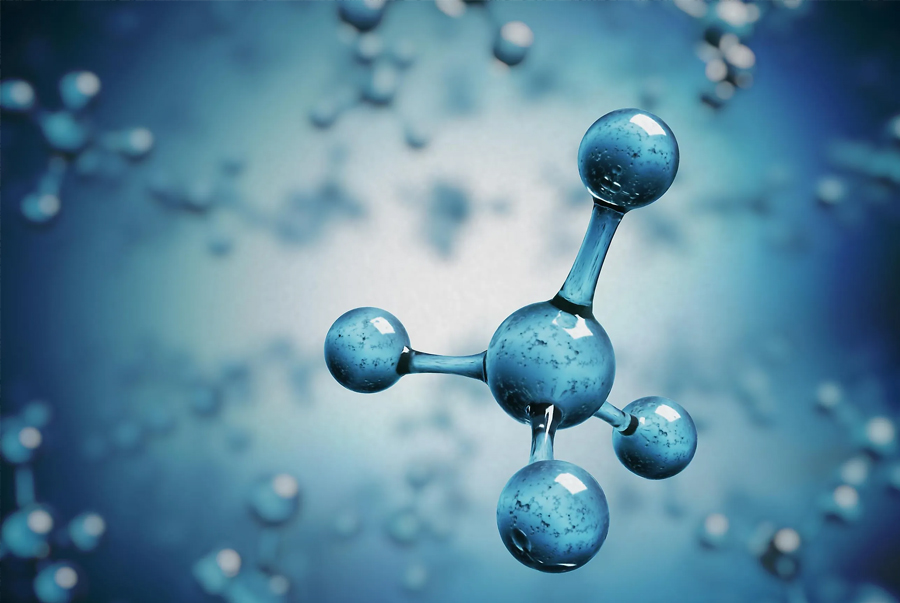Hi readers! Yes, it is very much possible. Please don’t get carried away just by looking at topic. It is a bit technical, but you will enjoy reading it.
It is based on a report that I wrote as an official assignment in 2011. Since 12 years have passed and a lot of new developments have been taken place hence, I decided to update this report and share it with you.
Pleas be informed that, “strategies to reduce methane” mentioned 12 years ago are still valid and are being re-produced here.
Today’s focus is on methane: one of the Green House Gas (GHG) notorious for its global warming potential (GWP)
It is the second most important anthropogenic (manmade) GHG after carbon dioxide (CO2), is responsible for 14% percent of global GHG emissions. It has relatively short lifespan in the atmosphere (≈ 12 years) and compared CO2, it is emitted in smaller quantities.
According to IPCC (intergovernmental Panel on Climate Change), GWP of CO2 is 1 and that of methane is 25 which means if there is 25 tons of CO2 in the air, its GWP will be equal to one tone of methane because methane’s ability to trap heat in the atmosphere is 25 times higher than CO2.
Methane predominantly comes from enteric fermentation, manure management, rice cultivation and residue burning. Livestock contribute 32% of methane from manure and gastroenteric releases. Rice cultivation in flooded fields present ideal conditions for methane-emitting bacteria that accounts for another 8 % of anthropogenic (man-made) emissions.
Methane also emitted during the production and transport of coal, natural gas, and oil; from the decay of organic matter in municipal solid waste landfills, some livestock manure storage systems, and certain agro-industrial and municipal wastewater treatment systems.
Agriculture is the largest anthropogenic source of methane emissions (145 Tg CH4Y1 to the atmosphere in 2017). In 1996, IPCC used the word Tera-grams (Tg) for expression of gas emission where one Tg is equal to 1012 grams or one million metric tons (MMT).
Methane also offers a unique opportunity to mitigate climate change and increased availability of energy supply. It is the main ingredient in natural gas, and it can be captured from landfills, hence like natural gas, it can be burned to produce electricity, heating buildings, or power garbage trucks. Capturing methane before it gets into the atmosphere also helps reduce the effects of climate change (https://archive.epa.gov). In a report published in 2017, it is estimated that chances of reducing methane from rice fields, enteric fermentation, manure management and residue burning can be of the magnitude of 10.6, 10, 2, and 1Tg CH4 year1, respectively. Without taken such measures for methane reduction, emissions are expected to increase approximately 45 percent i.e., 8,522 Million Metric Tons of CO2 Equivalent (MMTCO2E) by 2030 which currently (2021-22) is 1800 ppb due largely to agricultural activities and fossil fuel use.
United Nations Environment Programme (UNEP) and Climate and Clean Air Coalition on 20thAugust 2021, found that cutting farming-related methane emissions would be the key in the battle against climate change:
But the question is “how can the world do that?”
The answer is simple, it can be done by “rethinking the approaches to agricultural cultivation and livestock production through leveraging new technologies, if GHG emissions and global warming is to be contained up to 1.5oC: a target set in Paris agreement. This means shifting toward plant rich diets for animals and alternative sources of protein (instead of meat): Said UNEP Food Systems and Agriculture Advisor (https://www.unep.org/news-and-stories/story/methane-emissions-are-driving-climate-change-heres-how-reduce-them)
To achieve this, farmers can provide animal with more nutritious feed so that they are larger, healthier, and more productive, produce more meat and less methane. The cows can be provided with alternative types of feed to reduce the methane and manage manure more efficiently by converting it to compost or using it to produce biogas. Also, paddy fields could be irrigated and drained two to three times throughout the growing season which can reduce methane production by 50% without impacting yield. This could additionally save one-third of water thus making the strategy more economical.
With such practices, anthropogenic methane emissions could be reduced by as much as 45 per cent within the decade which could avert nearly 0.3°C of global warming by 2045, limit global temperature rise to 1.5˚C and putting the planet on track to achieve the
Paris Agreement targets.
Rice cultivation is largest producer of methane and is concentrated in irrigated areas which is responsible for 60% of the total rice production and 78% of methane. Tropics, sub-tropics, and parts of the temperate boreal regions contributes to most of the methane because these regions have large areas of paddy fields like that of Central and Latin America, Africa, and Southeast Asia: the later contributes about 90% to the global rice methane emissions while Africa and South America contribute 3.5% and 4.7%, respectively to the global methane emission from the Paddy fields.
Another significant source of agricultural methane emissions is enteric fermentation: a digestive process in ruminants, where microbes decompose and ferment plant materials, such as celluloses, fiber, starches, and sugars, in their digestive tract or rumen. Enteric methane is one of the by-product of this digestive process and is expelled by the animal through burping. According to 2021-22 estimates, about 36% of methane emissions enter in the atmosphere from this source (https://www.reuters.com).
Significant amount of methane emits from flooded paddy fields where anaerobic (absence of oxygen) conditions facilitates microbial methane generation in a way similar to wetland. Another major source of agricultural methane emission arises from losses of organic matter in manure.
Factors that significantly affect methane emission from rice fields includes, i) use of organic fertilizers, ii) water management and iii) certain soil characteristics.
Use of organic fertilizers and incorporation of rice straw into the soil leads to high emission compared to the fields fertilized with chemical fertilizer and nutrient amendments. Hence, organic vs chemical fertilizer should be tested as mitigation option.
It has been suggested that methane is already at saturation levels in the environment. Then the only option left to reduce methane accumulation in the atmosphere is to breaks it down into CO2. This way, the net effect of one tone of methane released into the environment would be identical to the effect of one tone of CO2. Hence research should be done on the identification of methods that oxidizes methane in the root zone or immediately upon its emission from the rice fields
Sulfur in rainfall stimulates non-methane producing microbes to outcompete methane producing microbes. This effect can reduce methane emissions from wetland by nearly 40%. Sulfur containing fertilizer should, therefore, be used and organic amendment be avoided in order to reduce methane production.
Inhibition of methane formation/mitigation options
Changing water management appears to be the most promising mitigation option for reducing emission in irrigated rice production. Mid-season drainage and intermittent irrigation reduce methane emission by >40%.
Methane-oxidizing bacteria are abundant in the oxidized floodwater-soil of rice rhizosphere. They oxidize methane to CO2 via methanol, formaldehyde, and formate. Oxygen is essential for the growth of such oxidizing bacteria. Up to 60% of the methane produced during rice growing season can be oxidized before it reaches the atmosphere. These methane oxidizing bacteria can be isolated from different rice fields and be improved through genetic engineering which can then be utilized for methane oxidation.
Reduced methane emissions from rice fields, however, is beset with increasing production which needs to be doubled by 2025. New irrigation techniques, fertilizer use efficiency, and developing new high-yielding rice varieties is therefore,
the order of the day that can enable global emissions reductions to the tune of 10 to 30%.
High-yield rice varieties grow quickly and can reduce the need to expand rice production onto the areas presently not under cultivation which in turn can reduce total methane emissions. It is unclear whether increasing harvests on existing lands would result in higher or lower net annual methane emissions?
Research is therefore, required to breed rice varieties having ability to reduce per unit methane emission.
Better water control can help increase the production efficiency of high-yielding varieties, which tend to produce lower and more variable yields under flooded conditions than under controlled irrigation. More research is needed to develop varieties that consistently produce higher yields under different conditions
Concluding remarks
Although I don’t believe in conclusion dear readers nevertheless, you can (after reading this blog) appreciate that to reduce methane emission from rice fields breeding /selecting low methane emitting and low water consumption rice cultivars is essential which is doable (This is my personal research work)
- Development of upland rice varieties through crossing with wild rice species is also doable (I have done extensive work on this and produced germplasm of Basmati rice consuming 50 % less water than required by traditional Basmati varieties).
- Mutation of upland wild rice species is also doable for increasing yield on low watered soils (tried and tested by myself)
- Screening commercial rice cultivars for intermittent drainage/irrigation is also doable/tried and tested)
- Reducing organic amendments (addition of rice straw and other such things as tool to increase organic matter or fertilizer supplement) and its conversion into organic matter added into rice fields is also doable,
- Adjusting land preparation (low to no tillage: doable)
- Adjusting culture practices with different genotypes (transplanting/direct seeding: tried and tested/doable),
- Adjusting cropping system (plant any upland crop like mung beans or any other crop that require less water/moisture before and after rice crop, (doable)
- Identify/select/produce methane utilizing bacteria from the rice fields (doable, very attractive research option)
- Enhancing production of methanotrophic bacteria in the rice field that will oxidize methane into CO2 Doable, Detailed procedure exists for such studies.
I am quite confident that one of these strategies (some of which are also mentioned by UNEP in 2021) is for you dear readers. Try it. Seeing is believing.
See you next week on
“Global food security and how we should go about it”
Take care,
Bye.





